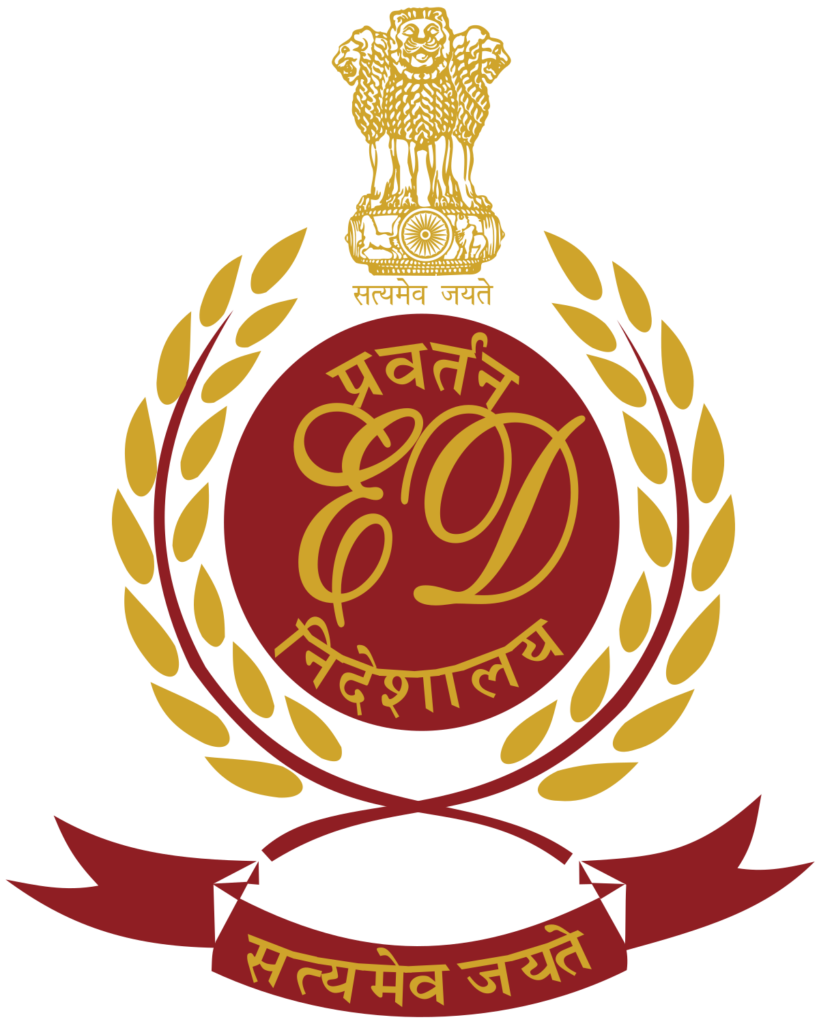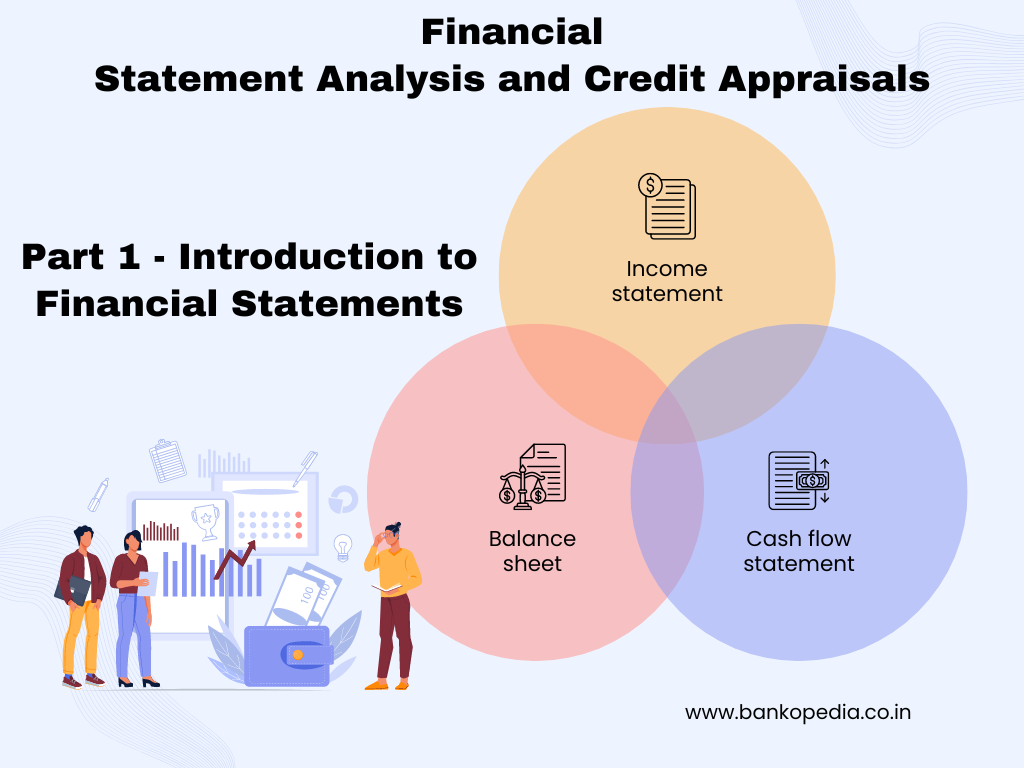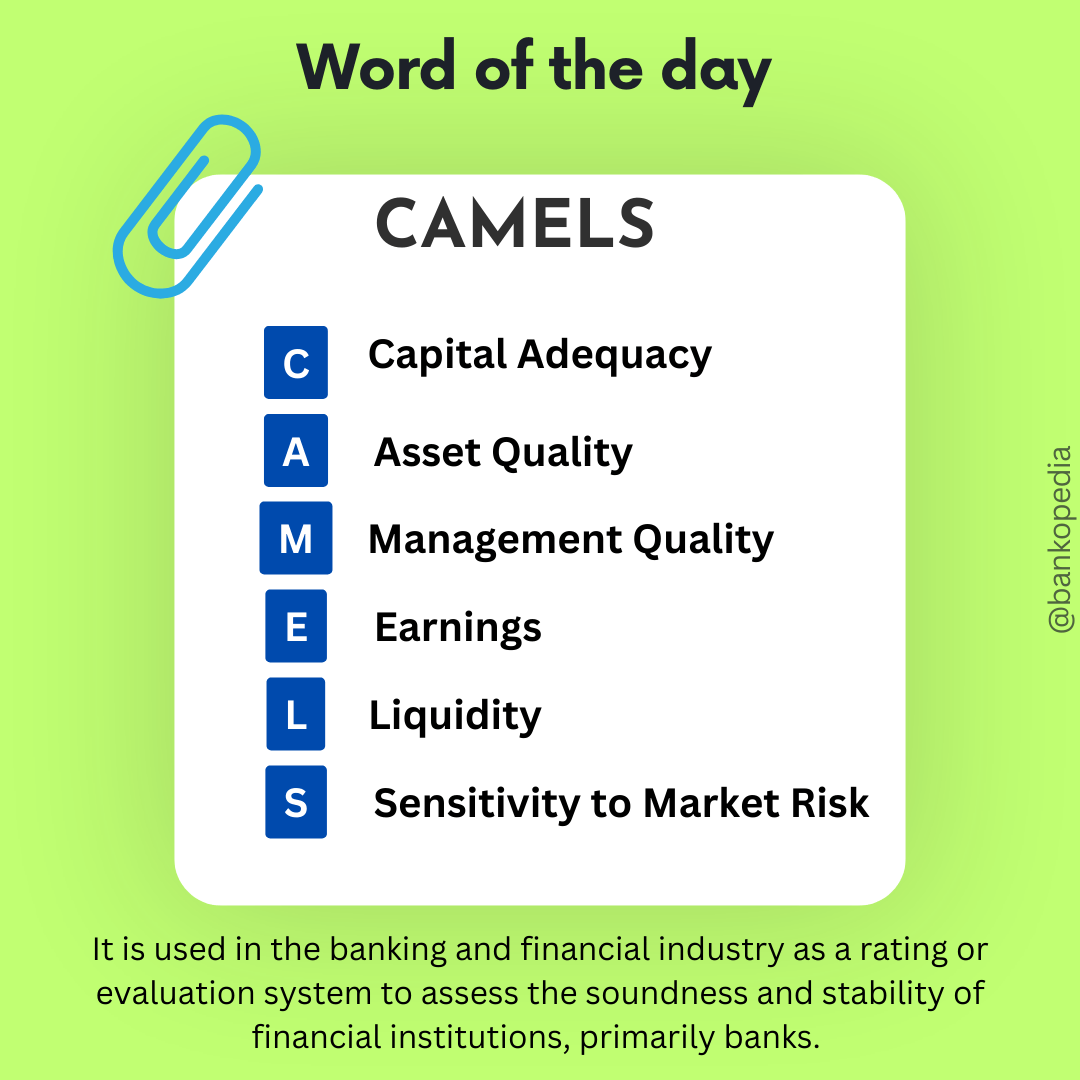Daily Banking Digest – 23 February 2024
Welcome to Daily Banking Digest, your premier source for the latest news and insights on February 23, 2024, focusing on banking, the economy, and finance. Our platform offers a comprehensive overview of the day’s most critical financial stories, market trends, and economic developments. Whether you’re a professional in the financial sector, an investor monitoring market movement, or someone interested in staying informed about the economic landscape, Daily Banking Digest provides reliable, up-to-date information.
Join our Telegram Channel for Daily PDF in your Inbox – Click Here
Table of Contents
Economy estimated to grow at 6.5% in FY25: Ind-Ra
The Indian economy is expected to continue growing, but at a slightly slower pace of 6.5% in the fiscal year 2024-25. This growth, along with positive indicators, suggests the potential for a new wave of private investment that could further boost the economy.

Key Points
- Growth Projections: India’s economic growth is projected at 6.5% for FY 2024-25, slightly lower than the RBI’s projection but in line with the IMF’s.
- Factors Supporting Growth: The economic recovery is supported by factors like sustained government spending, healthy corporate results, improved balance sheets, softening commodity prices, and the potential for a new private investment cycle.
- Positive Signals for Private Investment: Leading indicators suggest that private companies are becoming more confident about investing, potentially signaling a new surge in private sector investment.
- Strong Fundraising for Projects: The amount of money raised to finance large projects increased significantly in 2022-23, further supporting the view about an upswing in private investment.
- Confidence in Stability: Despite recent disruptions like the pandemic, companies feel more confident about the future and less concerned about the likelihood of major shocks.
- Rising Capacity Utilization: Capacity utilization is increasing, especially in sectors like cement and steel, which is driving investment in these areas.
- Caution about Consumption: While strong, consumption demand is still concentrated among higher-income households, which could limit the ability of companies to fully pass on increased input costs.
Russia managed to use up most of its rupee balance in Indian banks: Indian official
Russia has successfully addressed the issue of its large rupee balance in Indian banks. This balance, which accumulated due to defense sales and sanctions against Russia, has been largely used up through various investments and increased Indian imports.
Key Points
- Rupee Balance Reduced: Russia’s rupee balance in Indian banks, which was a concern, has been significantly reduced.
- Methods of Using Rupees: Russia utilized the rupees through increased Indian imports, infrastructure investments, equity investments, and purchasing government securities.
- Government Collaboration: The Indian government and RBI worked with Russia to find avenues for investment and boost Indian exports, helping to address the rupee balance issue.
- Continued Defense Purchases: India’s defense purchases from Russia are expected to remain strong. The two countries are ensuring that future rupee payments for defense deals (like the S-400 systems) are used effectively.
- Exploring New Projects: India and Russia are looking into more investment projects, potentially in heavy engineering. Deals like the Vande Bharat train manufacturing joint venture serve as examples.
- Strategic Use of Rupee Payments: Projects like the Goa shipyard building cargo ships for Russia demonstrate a continuous, beneficial use of Russia’s rupee holdings.
- Circumventing Sanctions: India and Russia established a rupee payment system to work around Western sanctions imposed after the Ukraine invasion.
- Oil Imports: India’s oil imports from Russia have significantly increased, though payments are primarily made in currencies other than the rupee.
Steel PLI 2.0 put on hold at the moment, 5 cos start rolling out products under existing PLI scheme.
The Indian government’s PLI 2.0 scheme, designed to boost the production of specialty steel, has been put on hold. Officials will first review the performance of the ongoing PLI 1.0 scheme before making any decisions about the future of PLI 2.0.

Key Points
- PLI 2.0 on Hold: The planned PLI 2.0 scheme for specialty steel is currently suspended.
- Review of PLI 1.0: A comprehensive review of the existing PLI 1.0 scheme will be conducted. This review will assess factors like product rollout time, financial outgo, and market demand.
- Focus on PLI 1.0 Implementation: The government’s immediate priority is to ensure the successful implementation of the existing PLI 1.0 scheme.
- Reasons for Delay: The delays in PLI 1.0 implementation have stemmed from factors like changing demand patterns, high capital expenditure, environmental clearances, expertise gaps, and unresolved land disputes.
- PLI 1.0 Progress: Despite delays, some progress has been made under PLI 1.0 :
- Five companies have begun producing specialty steel.
- More companies are expected to launch products soon.
- Significant investments have already been made, with more expected in the coming fiscal year.
- Official Interventions: The Ministry of Steel has been actively resolving issues to ensure the timely commissioning of specialty steel projects. This includes helping companies obtain visas, clearances and address operational challenges.
I&B Ministry launches NaViGate, Press Sewa portals

The Indian Ministry of Information & Broadcasting (I&B) has launched several new digital initiatives designed to streamline processes, improve transparency, and provide easier access to information for businesses and the public.
Key Points
- NaViGate Bharat Portal: This bilingual (language options not specified) portal offers a centralized location to find videos and information about government programs and initiatives.
- Press Sewa Portal: Developed to simplify registration procedures for media organizations, particularly under the new Press and Registration of Periodicals Act, 2023.
- CBC Empanelment, Media Planning, and e-Billing System: Introduces a streamlined system for the Central Bureau of Communication, promoting transparency and efficiency in media planning for government clients. It aims to provide a paperless, end-to-end solution.
- National Register for Local Cable Operators: This initiative begins the process of centralizing a database for local cable operators (LCOs). It will move registration from spread-out post offices to an online system.
Additional Notes
- I&B Minister Anurag Thakur emphasized India’s attractiveness as an investment destination, further supported by these initiatives.
- The overall goal of these projects is to improve ease of doing business for media entities and enhance communication between the government and the public.
Jefferies expects Indian stock market to hit $10 trillion by 2030.
Investment firm Jefferies is extremely optimistic about India’s economic growth prospects, predicting it will become the world’s third-largest economy within the next few years and a nearly $10 trillion market by 2030.

Key Points
- Rapid Growth: India’s economy has expanded significantly in the past decade and is poised to overtake Japan and Germany to become the third-largest economy by 2027.
- Market Potential: India’s stock market capitalization is expected to reach nearly $10 trillion by 2030, making it too large for global investors to ignore. Increased market free float and streamlined processes will be key to this growth.
- Key Reforms: Structural reforms like GST, bankruptcy laws, RERA, and investments in physical and digital infrastructure have driven recent growth and laid the groundwork for continued success.
- Positive Macroeconomic Outlook: India boasts a strong macroeconomic story under Prime Minister Modi’s leadership, with projected GDP growth and earnings growth rates attractive to investors.
- Domestically-Driven Market: India’s thriving start-up ecosystem and a strong local asset management industry have made the stock market less reliant on foreign flows, adding stability.
Former Bank of Maharashtra Chief Executive A S Rajeev appointed as Vigilance Commissioner
A S Rajeev has been appointed as a Vigilance Commissioner in the Central Vigilance Commission (CVC) by President Droupadi Murmu. Before this role, Rajeev was the Managing Director & CEO of the Bank of Maharashtra and had recently opted for voluntary retirement from this position. The appointment is part of the CVC’s structure, which includes a Central Vigilance Commissioner and two Vigilance Commissioners to oversee vigilance activities.

Key points:
- President Droupadi Murmu appointed A S Rajeev as Vigilance Commissioner in the Central Vigilance Commission (CVC).
- A S Rajeev previously held the position of Managing Director & CEO at the Bank of Maharashtra, a public sector bank.
- Rajeev voluntarily retired from his role at the Bank of Maharashtra last week, with his retirement request accepted by the competent authority, as per a Department of Financial Services (DFS) letter.
- The CVC operates under the CVC Act as a three-member body, including the Central Vigilance Commissioner and two Vigilance Commissioners.
- Praveen Kumar Srivastava has been serving as the Central Vigilance Commissioner since May 2023, and Arvinda Kumar has been a Vigilance Commissioner since August 2022.
Payments banks seek RBI nod for small-value deposits and loans.
Payments banks (PBs) in India are facing challenges with attracting and retaining low-cost deposits due to competition from commercial banks. They are likely to approach the RBI with requests to expand their services and improve their financial viability.

Key Points
- Need for Fixed and Recurring Deposits: PBs want permission to offer fixed deposits (FDs) and recurring deposits (RDs) to compete with commercial banks and reduce deposit outflow.
- Small-Ticket Lending: PBs seek authorization to provide small loans to individuals and micro/small enterprises (MSEs). This would generate higher yields and support the higher costs of FDs and RDs.
- Deposit Limit Increase: PBs want the RBI to raise the maximum customer balance limit from ₹2 lakh to ₹5 lakh, aligning with the increased deposit insurance cover.
- Challenges Faced by PBs: Many potential PBs have either withdrawn their licenses or failed to commence operations. Paytm PB faces restrictions due to non-compliances, and Fino PB is seeking conversion into a small finance bank.
- Purpose of Payments Banks: PBs were designed to provide banking services to low-income groups, migrant workers, and small businesses. They currently offer limited services like payments, remittances, and limited deposit options.
ED seeks look out circular against Byju Raveendran

The Enforcement Directorate (ED) in India has requested a look-out circular (LOC) against Byju Raveendran, founder and CEO of the edtech company Byju’s. The LOC is intended to prevent him from leaving the country while under investigation for alleged violations of foreign exchange laws.
Key Points
- Existing LOC: An older LOC ‘on intimation’ is already in place, which informs authorities when Raveendran travels abroad but doesn’t prevent him from leaving.
- Reason for Revised LOC: The ED wants a stricter LOC to ensure Raveendran remains in India during the ongoing investigation, citing the interests of investors.
- FEMA Violations: The ED is investigating Byju’s and Raveendran for alleged violations of the Foreign Exchange Management Act (FEMA) amounting to Rs 9,362.35 crore.
- Specific Allegations: The alleged violations include delayed filings related to foreign investments and failure to realize export proceeds.
- Raveendran’s Location: Raveendran is currently in Dubai and frequently travels between India and Dubai.
Additional Context
- This LOC request highlights the ongoing scrutiny Byju’s is facing from authorities.
- The outcome of the ED investigation could have significant implications for Byju’s and its founder.
Reforms in last 10 yrs are foundation of growth over next decade: Jefferies.
Jefferies Equity Research is very bullish on India’s economic future, citing strong reforms under Prime Minister Modi as the foundation for substantial growth in the coming decades. They predict India will become the world’s third-largest economy by 2027.
Key Points
- Rapid Growth: India’s economy has expanded significantly in the past decade and is poised to overtake Japan and Germany in size within the next few years.
- Market Potential: India’s stock market capitalization is expected to reach $10 trillion by 2030, attracting significant foreign investment.
- Key Reforms: Reforms like GST, bankruptcy laws, RERA, and investments in physical and digital infrastructure have fueled recent growth and laid the groundwork for continued success.
- Positive Demographics: India’s young and growing workforce provides a significant economic advantage.
- Earnings Growth and Foreign Investment: Strong earnings growth and increasing market weight should continue to attract foreign capital to India.
Mineral output increases by 5.1% in December, says mines ministry.
India’s mineral production experienced growth in December 2023, with a 5.1% increase compared to the same period in the previous year. This positive trend extends throughout the current fiscal year, showing an 8.5% cumulative growth rate.
Key Points
- Overall Growth: The mining and quarrying sector saw a production increase in December 2023.
- Specific Mineral Performance: Lignite, limestone, coal, bauxite, and natural gas showed positive production growth. However, petroleum (crude), gold, chromite, phosphorite, and diamond production declined.
- Value of Production: Iron ore production value increased significantly year-over-year in December 2023. Production value for limestone and silver also increased.
January crude imports hit 21-month high due to strong Industrial demand.
India’s crude oil imports surged in January 2024, reaching a 21-month high due to increased demand from a rebounding manufacturing sector and record car sales.
Key Points
- Increased Imports: India’s crude oil imports rose significantly in January, both compared to the previous month and the same month in the prior year.
- Demand Drivers: The import surge reflects rising fuel consumption driven by strong industrial activity and record-breaking car sales.
- Product Trade: India’s imports of refined oil products also increased year-over-year, while product exports saw a similar rise.
- Global Oil Outlook: The International Energy Agency (IEA) forecasts India to become the world’s primary driver of oil demand growth in the coming years.
- Saudi Oil Pricing: Saudi Arabia’s decision to lower the price of its flagship crude likely contributed to India’s increased imports.
Confident of India’s growth at 6-8% for next 10 years, says Vaishnaw
Union Minister Ashwini Vaishnaw expressed confidence in India’s sustained economic growth, predicting a consistent 6-8% growth rate over the next decade. He invited global businesses to invest in India, highlighting the country’s favorable economic outlook.
Key Points
- Optimistic Growth Projection: Vaishnaw believes India will maintain a 6-8% growth rate for the next ten years.
- Foundations for Growth: The minister outlined existing initiatives under Prime Minister Modi that have laid the groundwork for this projected growth.
- India’s Development Focus: Over the next five years, India will prioritize manufacturing, education, and technology-driven healthcare advancements to support its goal of becoming a developed nation by 2047.
- Invitation to Global Investors Vaishnaw emphasized that India welcomes global businesses and new ideas, offering opportunities to tap into both domestic and international markets.
India on track to be $10 trn economy, set for 3rd largest slot: WEF prez
World Economic Forum (WEF) President Borge Brende expresses optimism about India’s economic trajectory, predicting it will soon become the world’s third-largest economy with a GDP of $10 trillion. He highlights India’s positive outlook amidst global uncertainty.
Key Points
- India’s Growth Potential: India is the world’s fastest-growing large economy and is poised to become a $10 trillion economy within the next few years.
- Global Interest in India: There is significant international interest in India’s economic growth, as evidenced by the recent WEF meeting in Davos.
- Drivers of Growth: India’s growth is fueled by ongoing reforms, increased foreign direct investment, and a shift towards domestic manufacturing.
- Optimism Amidst Challenges: India stands out for its optimism in a world facing geopolitical instability and economic downturn.
- India’s Diplomatic Role: India’s influence on the global diplomatic stage is expected to grow, though its primary focus remains on domestic economic development.
Premature move on monetary policy could hurt inflation efforts: RBI Guv
RBI Governor Shaktikanta Das emphasizes that the fight against inflation is not yet over. He warns against premature easing of monetary policy, as it could jeopardize the progress made in bringing down inflation.
Key Points
- Inflation Remains a Concern: The RBI Governor stresses that inflation control remains a top priority, and the central bank must stay vigilant.
- Disinflation Challenges: The final stages of reducing inflation (“the last mile”) can be particularly difficult to manage.
- Caution Against Premature Easing: Das warns that anticipating policy changes and relaxing monetary policy too soon could reverse the gains made in curbing inflation.
- Market Dynamics: The Governor highlights that markets often anticipate policy changes, and the RBI needs to be mindful of this dynamic.
Reliance Industries becomes the first conglomerate to set up ship leasing firm at IFSC Gift city.
A Reliance Industries (RIL) subsidiary plans to establish a ship leasing company in the GIFT City IFSC (International Financial Services Centre) zone in Gujarat. This move aims to bring offshore ship leasing operations back to India.

Key Points
- New Ship Leasing Entity: Reliance International Leasing IFSC will focus on operating leases for ships, vessels, and voyage charters.
- Investment and Employment: The project involves an investment of ₹22,033 crore and is expected to generate 35 jobs over five years.
- Financial Projections: The company projects significant export of services and a positive net foreign exchange (NFE) impact.
- Onshoring Ship Leasing: The GIFT City IFSC initiative aims to attract Indian companies currently conducting ship leasing activities overseas by offering regulatory clarity, tax benefits, and the ability to transact in foreign currency.
- Benefits for Indian Shipping Industry: This move could boost the Indian shipping industry by simplifying freight agreements and making ship leasing more accessible for domestic companies.
PFRDA amends trustee bank and CRA regulations for subscriber protection, enhancing ease of doing business.

The Pension Fund Regulatory and Development Authority (PFRDA) has updated its Trustee Bank (TB) and Central Recordkeeping Agency (CRA) regulations to improve subscriber protection and streamline operations within the National Pension System (NPS).
Key Points
- Focus on Security and Ease of Use: The amendments prioritize subscriber protection and aim to make processes simpler for those using the NPS.
- “Fit and Proper” Criteria for CRA: The PFRDA now requires CRAs and their key personnel to meet specific “fit and proper” standards, ensuring greater accountability.
- Trustee Bank Regulations: Amendments address fraud prevention policies, compensation for subscribers, registration processes, and certificate surrender, strengthening the role of trustee banks.
- CRA Regulations: Changes to CRA regulations align governance with the Companies Act 2013 and increase transparency through enhanced disclosure requirements.
- Fraud Prevention: Both CRAs and Trustee Banks are now required to have robust fraud prevention and mitigation policies in place.
Dubai announces five-year multiple-entry visa for tourists from top source market India amid record visitor numbers
Dubai has introduced a new five-year multiple-entry visa specifically to attract more visitors from India. This move strengthens the tourism and economic ties between the two countries.
Key Points
- New Visa Benefits: The multiple-entry visa allows for stays of up to 90 days at a time (extendable by 90 days), with a maximum of 180 days per year.
- Record-Breaking Tourism: Dubai saw a significant increase in Indian tourists in 2023, surpassing pre-pandemic levels. India remains the top source market for Dubai’s tourism.
- Strategic Initiative: The new visa aims to deepen the existing relationship between India and Dubai and contribute to the Dubai Economic Agenda D33’s goals.
- Mutual Benefits: This initiative promotes tourism and opens up further possibilities for economic collaboration between the UAE and India.
- Target Audience: Dubai offers a diverse range of attractions catering to Indian travelers with various interests, including luxury, culture, family experiences, and business.
Advantages and disadvantages of cryptocurrency.
Cryptocurrency offers potential benefits for investors in India, but it’s important to understand both the advantages and disadvantages before investing in this emerging asset class.

Advantages
- Financial Inclusion: Cryptocurrency can bring financial services to those who lack traditional banking access.
- Inflation Hedge: Limited-supply cryptocurrencies like Bitcoin can protect against inflation.
- Remittance Benefits: Sending money internationally via cryptocurrency is often faster and cheaper than traditional methods.
- Investment Opportunities: Crypto offers new investment avenues with potentially high returns.
- Fast Transactions: Cryptocurrency transactions settle quickly.
- Decentralization: No central authority controls cryptocurrency, reducing the risk of manipulation.
Disadvantages
- Regulatory Uncertainty: India’s legal stance on cryptocurrency remains somewhat unclear.
- Volatility: Cryptocurrencies experience significant price swings, increasing the risk of losses.
- Fraud Risk: Scams and fraudulent projects are prevalent in the crypto space.
- High Power Consumption: Bitcoin’s energy-intensive mining process raises environmental concerns.
- Impact on Traditional Banking: Cryptocurrency could potentially disrupt the traditional banking system.
The Future of Cryptocurrency in India
The future of cryptocurrency in India depends on how effectively the government and industry address these challenges while maximizing the benefits of this technology.
Important Notes:
- Cryptocurrency investing is legal in India since the Supreme Court overturned the RBI ban in 2020.
- The Indian government is working on a regulatory framework for the crypto industry.
PFRDA updates regulations to cut compliance costs, prevent frauds.
The Pension Fund Regulatory and Development Authority (PFRDA) has amended regulations governing Trustee Banks (TBs) and Central Recordkeeping Agencies (CRAs) within the National Pension System (NPS). These changes are designed to enhance security for subscribers and streamline compliance processes.
Key Points
- Focus on Fraud Prevention: Both TBs and CRAs are now required to implement robust fraud prevention policies to protect subscriber interests.
- Simplified Regulations: Amendments aim to reduce the complexity of compliance for both TBs and CRAs.
- Subscriber Compensation: Changes clarify the process of compensating subscribers in the event of fraud.
- Governance and Oversight: Amendments strengthen CRA governance and oversight mechanisms.
Govt extends the interest equalization scheme until June 30, 2024
The Indian government has extended the Interest Equalization Scheme for pre and post-shipment rupee export credit, offering interest rate subsidies to exporters to boost India’s export competitiveness.
Key Points
- Scheme Extension: The scheme will now continue until June 30, 2024.
- Beneficiaries: Manufacturer exporters of specified products and all MSME exporters will receive interest rate subsidies.
- Interest Rate Subsidy: Eligible exporters will benefit from reduced interest rates (2% for manufacturers, 3% for MSMEs).
- Scheme Modifications:
- Banks pricing loans above a certain threshold will face restrictions.
- A cap of Rs 10 crore per year per Importer-Exporter Code (IEC) on the net subvention amount has been introduced.
- Original Launch and Extensions: The scheme was launched in 2015 and has been extended several times, including during the COVID-19 pandemic.
ABOUT AUTHOR
Author is a seasoned banking and finance professional with over 10 years of experience in the banking and financial services industry. He has worked in various roles, including credit analysis, financial analysis, and risk management, at one of the leading public sector bank of India. Author has a deep understanding of the banking and financial services landscape, having worked with clients across various industries and sectors. He is passionate about helping businesses and individuals make informed financial decisions and achieve their financial goals. In addition to his work in the finance industry, Author is also an avid writer and blogger. He has written extensively on topics related to banking, finance, and investments, sharing his knowledge and insights with a wide audience. Through his blog, Author aims to educate and empower readers with the knowledge and tools they need to make smart financial decisions and achieve financial success. Whether you’re a business owner, investor, or simply someone looking to improve your financial literacy, Author’s blog is a valuable resource that you won’t want to miss.











